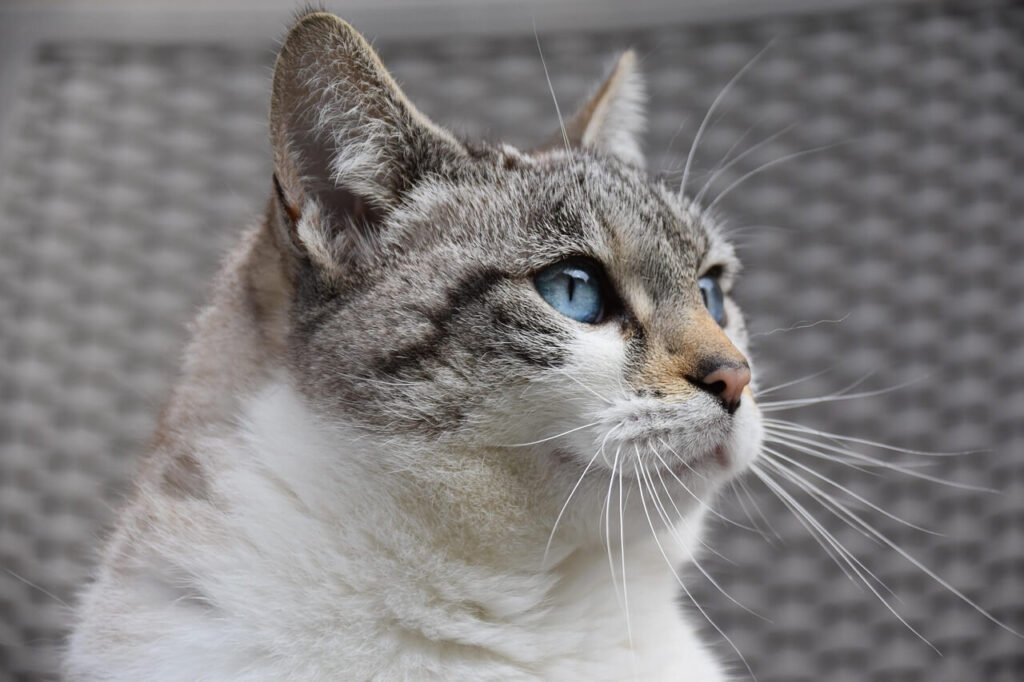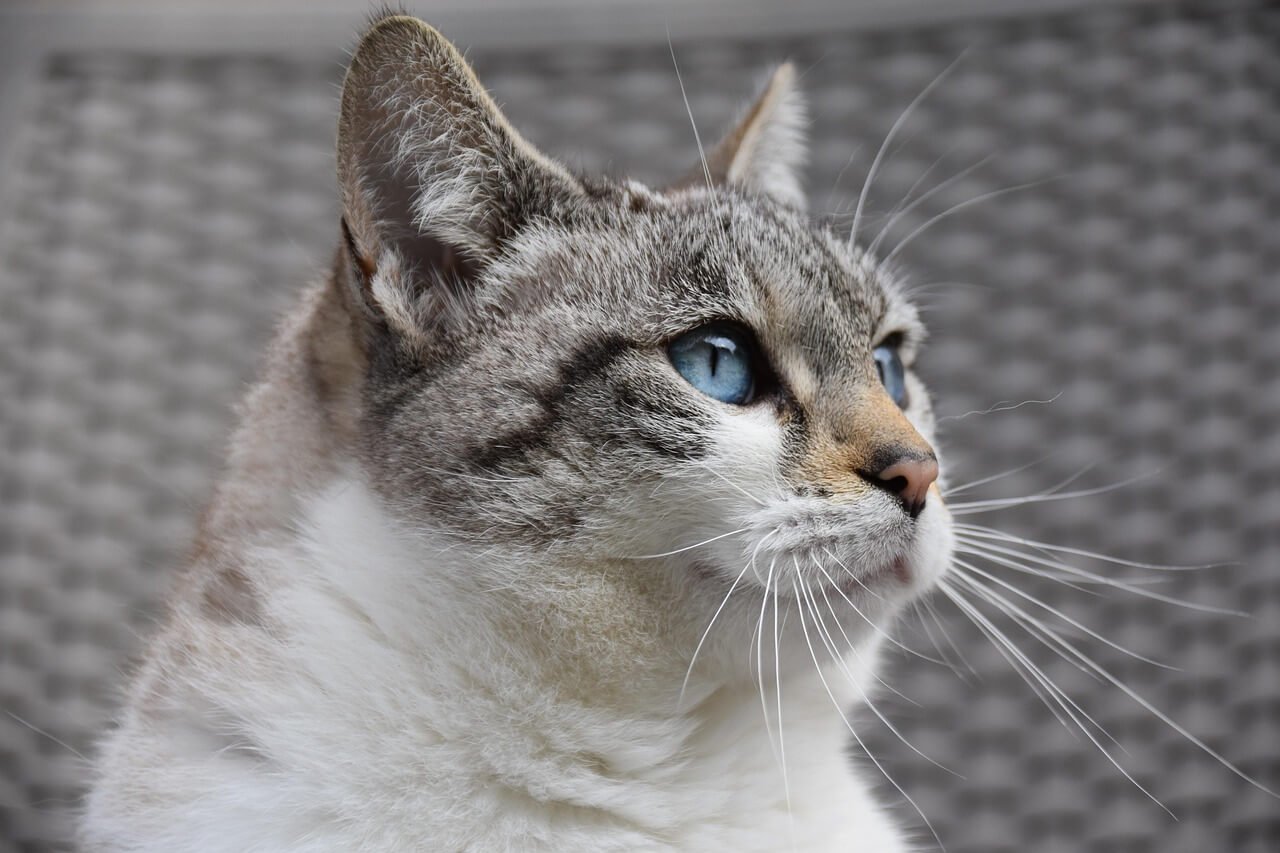Cat Losing Hair on Belly: What You Need to Know
If you’ve noticed your cat losing hair on their belly, it’s natural to feel concerned. Hair loss in cats can stem from a variety of causes, ranging from harmless grooming habits to underlying health issues. While some cases are temporary and easily resolved, others may require professional attention. Understanding the potential reasons behind this condition is the first step toward ensuring your feline friend stays healthy and comfortable. In this guide, we’ll explore common causes, signs to watch for, and practical tips to address hair loss on your cat’s belly effectively.
Common Causes of Hair Loss on a Cat’s Belly
Hair loss on a cat’s belly can be triggered by several factors. Identifying the root cause is essential for determining the best course of action. Here are some common reasons why your cat might be losing hair:
Allergies:
Cats can develop allergies to food, environmental factors (like pollen or dust), or flea bites, leading to excessive licking and hair loss.Parasites:
Fleas, mites, or ringworm infections can irritate your cat’s skin, prompting them to groom excessively and lose hair in the process.Stress or Anxiety:
Changes in routine, moving homes, or the introduction of new pets can cause stress, which may manifest as over-grooming and localized hair loss.Hormonal Imbalances:
Conditions like hyperthyroidism or Cushing’s disease can disrupt your cat’s hormonal balance, resulting in patchy hair loss.Skin Infections:
Bacterial or fungal infections can damage the skin and lead to hair loss, often accompanied by redness, scabs, or irritation.
By recognizing these potential causes, you can take the first steps toward addressing your cat’s hair loss and restoring their comfort.
Signs That Your Cat’s Hair Loss Requires Veterinary Attention
While minor shedding is normal, certain symptoms indicate that your cat’s hair loss may need professional evaluation. Keep an eye out for these warning signs:
Bald Patches:
Large areas of missing fur, especially on the belly, could signal an underlying issue that requires treatment.Red or Inflamed Skin:
If the exposed skin appears irritated, red, or swollen, it may be infected or reacting to an allergen.Excessive Licking or Scratching:
Persistent grooming behaviors that result in hair loss often point to discomfort or an underlying medical condition.Behavioral Changes:
A cat that becomes unusually lethargic, aggressive, or withdrawn may be experiencing pain or illness related to their hair loss.Odor or Discharge:
Unpleasant smells or visible discharge from the affected area could indicate a bacterial or fungal infection.
If you notice any of these signs, consulting a veterinarian is crucial to ensure your cat receives timely care and treatment.
Check this guide 👉Cat Losing Hair at Base of Tail: Best 7 Expert Tips!
Check this guide 👉Cat Losing Hair Around Eyes: Best 7 Expert Tips!

Preventive Measures | Treatment Options |
|---|---|
Regular grooming to prevent matting | Topical medications for parasites |
Balanced diet rich in essential fats | Antibiotics for bacterial infections |
Flea prevention treatments | Antifungal shampoos for ringworm |
Stress-reducing toys and activities | Hormonal therapies for imbalances |
Allergy testing and management | Anti-anxiety medications if needed |
How to Support Your Cat’s Recovery at Home
Once you’ve identified the cause of your cat’s hair loss, there are several ways to support their recovery and promote healing. These home care tips can complement veterinary treatment:
Maintain a Clean Environment:
Regularly wash bedding, vacuum carpets, and clean litter boxes to minimize allergens and irritants.Provide a Balanced Diet:
Ensure your cat’s diet includes essential nutrients like omega-3 fatty acids, which promote healthy skin and coat.Use Gentle Grooming Tools:
Brush your cat gently to remove loose fur and prevent matting, but avoid over-grooming sensitive areas.Create a Stress-Free Space:
Offer hiding spots, cozy beds, and quiet areas where your cat can relax and feel secure.Monitor Progress Closely:
Keep track of improvements or worsening symptoms to share with your veterinarian during follow-up visits.
With consistent care and attention, you can help your cat regain their confidence and comfort as they heal.
Preventing Future Episodes of Hair Loss
Prevention is key to avoiding recurring hair loss issues. By taking proactive measures, you can protect your cat’s skin and coat health in the long term:
Schedule Regular Vet Check-Ups:
Routine visits allow your vet to detect and address potential health issues before they escalate.Manage Parasite Control:
Use vet-recommended flea and tick treatments to keep your cat free from irritating pests.Minimize Stress Triggers:
Introduce changes gradually and provide enrichment activities to reduce anxiety-related behaviors.Watch for Dietary Sensitivities:
Experiment with hypoallergenic diets if your cat shows signs of food allergies or sensitivities.Observe Seasonal Patterns:
Some cats experience seasonal shedding or allergies; adjusting care routines accordingly can help.
By staying vigilant and implementing these preventive strategies, you can minimize the risk of future hair loss episodes.
Additional Tips for Managing Hair Loss
While addressing the root cause of your cat’s hair loss is crucial, incorporating additional care strategies can further support their recovery. These tips focus on enhancing your cat’s overall well-being and comfort.
Use Natural Remedies:
Coconut oil or aloe vera gel (cat-safe varieties) can soothe irritated skin and promote healing. Always consult your vet before applying any new products.Encourage Playtime:
Engaging your cat in interactive play reduces stress and redirects their energy away from excessive grooming.Provide Scratching Alternatives:
If your cat is licking or scratching due to boredom, offering scratching posts or toys can help redirect their behavior.
By integrating these supportive measures, you can create a more holistic approach to managing your cat’s hair loss and improving their quality of life.
Common Mistakes to Avoid When Dealing with Hair Loss
When addressing hair loss in cats, it’s easy to make mistakes that could worsen the situation. Being aware of these pitfalls can help you avoid them and ensure proper care.
Ignoring Early Signs:
Delaying action when you first notice hair loss can allow underlying issues to progress. Address symptoms promptly to prevent complications.Over-Grooming Your Cat Yourself:
While grooming is important, overdoing it can irritate your cat’s skin further. Stick to gentle, infrequent brushing.Using Human Products:
Shampoos, lotions, or creams designed for humans can harm your cat’s sensitive skin. Always use pet-specific products.Skipping Vet Visits:
Self-diagnosing without professional guidance may lead to incorrect treatments. Regular vet consultations are essential.
Avoiding these common mistakes ensures that your cat receives the care they need without unnecessary setbacks.
Ways to Boost Your Cat’s Skin and Coat Health
Improving your cat’s skin and coat health can reduce the likelihood of future hair loss episodes. These proactive steps focus on long-term wellness and prevention.
Incorporate Omega-3 Supplements:
Omega-3 fatty acids, found in fish oil, can improve skin hydration and promote a shiny, healthy coat.Ensure Proper Hydration:
Encourage your cat to drink more water by providing fresh, clean water or using a cat water fountain. Hydration supports skin elasticity.Rotate Protein Sources in Their Diet:
Offering a variety of high-quality proteins can prevent dietary sensitivities and ensure balanced nutrition.Limit Exposure to Harsh Chemicals:
Avoid cleaning products with strong chemicals around your home, as they can irritate your cat’s skin.Maintain a Consistent Grooming Routine:
Regular, gentle grooming helps distribute natural oils and prevents matting, which can contribute to hair loss.
By implementing these practices, you can strengthen your cat’s skin and coat health, reducing the risk of future hair loss and keeping them looking and feeling their best.
Frequently Asked Questions About Cat Hair Loss on the Belly
Is it normal for cats to lose hair on their belly?
Some shedding is normal, but excessive or patchy hair loss may indicate an underlying issue.
Can stress cause my cat to lose hair?
Yes, stress or anxiety can lead to over-grooming and result in hair loss.
What should I do if my cat has bald patches?
Consult a veterinarian to determine the cause and appropriate treatment.
How can I prevent fleas from causing hair loss?
Use vet-approved flea prevention products and maintain a clean environment.
Will my cat’s hair grow back after treatment?
In most cases, hair will regrow once the underlying issue is resolved and the skin heals.
Restoring Your Cat’s Comfort and Confidence
Hair loss on your cat’s belly can be distressing, but understanding its causes and treatment options empowers you to take action. Whether the issue stems from allergies, parasites, or stress, addressing it promptly ensures your cat remains happy and healthy. With proper care, a balanced diet, and regular veterinary check-ups, you can restore your cat’s coat and prevent future problems. Remember, your feline companion relies on you to provide the love and attention they need to thrive—so stay observant, patient, and proactive in their care.
Understanding Bone Supplement for Cats: Best 7 Expert Tips! – Safe, vet-approved guidance for strong feline bones & balanced nutrition.
Bone Supplement for Dogs: Best 7 Expert Tips! – Expert guide to calcium, collagen & bone health for every life stage.
Understanding Can Cats Get Sunburn: Best 7 Expert Tips! – Protect your feline from UV damage with vet-backed prevention strategies.
How to Train a Seizure Alert Dog: Best 7 Expert Tips! – Learn expert-backed steps to nurture natural instincts into reliable, life-saving seizure alerts.





